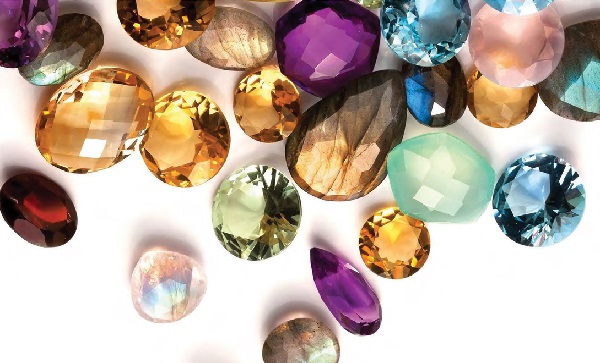What is required at this juncture is not a set of haphazard short-term policies, but a coherent and planned development strategy for the whole G & J sector, says R Sugandha

The Indian economy faces a challenging task of reviving growth in the post-pandemic scenario. The early onset of domestic slowdown and global disruptions has affected the G & J industry, both in terms of demand and supply factors.
The demand-supply tug-of-war
What is required at this juncture is not is not a set of haphazard short-term policies, but a coherent and planned development strategy for the whole G & J sector through demand infusion and effective stimulus, because the slowdown started much earlier and is structural in nature. As the economy is going through unprecedented crises due to the pandemic and the subsequent lockdown, strategies to revive growth in a phased manner are attracting attention.
The Gem & Jewellery Export Promotion Council’s Chairman Colin Shah, Vice Chairman Vipul Shah, and Executive Director Sabyasachi Ray held a video meeting with the Hon’ble Finance Minister, Smt. Nirmala Sitharaman on 6th July, and made a presentation on the critical issues concerning the gem and jewellery industry.
Some of the concerns presented during the meeting included, E-commerce policy for the gem and jewellery sector; making MyKYCBank platform mandatory for all gem and jewellery entities; sale of rough diamonds in India by miners to Special Notified Zones (SNZs); requested a clarification on Online Equalisation Levy for B2B international diamond auctions; reduction in import duty on polished diamonds, and Gold Monetisation scheme, amongst others.
According to Alkesh Shah of Gold Star Jewellery, “Ecommerce can help regain certain percentage of sales, small ticket items and fashion jewellery can be sold over ecommerce quite successfully. Bridal jewellery may be difficult to get sold online. Ecommerce is surely very important. Many exporters have already been using ecommerce platform .”
Ecommerce can help regain certain percentage of sales, small ticket items and fashion jewellery can be sold over ecommerce quite successfully. Bridal jewellery may be difficult to get sold online. Ecommerce is surely very important. Many exporters have already been using ecommerce platform Alkesh Shah, Gold Star Jewellery
The most important issue is to outline an approach to put the economy back on track. It is here that a deeper understanding of the current crisis is necessary as the economy had started to slow down much earlier.

Irregularities of Regulations
Says Dheeraj Menda, Studio Rêves, “Regulations in India aren’t conducive for growth of ecommerce. There is no provision for returned goods. When a customer (in a B2C scenario) returns goods, these goods are treated as reimports and 25 per cent duty is levied on these goods. This duty needs to be waived off totally. The people who are part of SEZ get many exemptions. This duty on re-imports is also exempted for companies located in a Special Economic Zones (SEZs) and brought to any other place in India.
Regulations in India aren’t conducive for growth of ecommerce. There is no provision for returned goods. When a customer (in a B2C scenario) returns goods, these goods are treated as re-imports and 25 per cent duty is levied on these goods. This duty needs to be waived off totally Dheeraj Menda, Studio Rêves
The Council’s standpoint
GJEPC has urged the Finance Ministry to reduce polished diamond import duty from 7.5 per cent to 2.5 per cent to help India to strengthen its status as a polished diamond hub, as all distribution would be from India, leading to increase in duty collection due to greater volumes. India imports almost 1/3rd of world’s gold bullion up to 900 Tons. While 1/3rd of the gold imported is for nonproductive investments the balance 2/3rd is for consumption. This adds to the trade deficit and increases rupee depreciation.
Exports from SEZ have witnessed a decline of (-) 8.07 per cent during the last 5 years, with $5.8 billion sales in 2014- 15 dropping to $3.8 billion in 2018- 19. Due to seasonal nature of demand, majority of exports occur in 6 months and hence, there is over-capacity built up. This leads to the under utilisation during lean periods. To mitigate this effect, SEZ units may be permitted to do job work for DTA units by following certain safeguards and on payment of GST on labour charges, especially post Covid. The Gem & Jewellery Export Promotion Council, has put forth concerns to the FM with the vision to bring in “Ease of Doing Business” in the industry in these trying times.
What the Indian G & J industry needs?
The Indian geman gem and jewellery industry is one of the leading exporters in the world, significantly contributing to the GDP of the country, 13 per cent to merchandise exports and employing around five million people.
“The problem in India lies in Domestic Tariff Areas (DTAs). Companies located in Seepz and SEZs get all the exemptions, rules are conducive to businesses located in these zones,” asserts Menda. If you want the whole country to develop, the government needs to create a conducive environment for the whole industry and not just those companies who are located in selected zones; only then the country on the whole can prosper. Duty exemption on re-imports (on goods returned by individual customers abroad) is the need of the hour.
Whereas, Colin Shah, Chairman, GJEPC, said, “We need to take measures and bring in reforms that would strengthen the ease of doing business in the industry, and at the same time make the industry self-reliant or Aatmanirbhar. Finance Minister Nirmala Sitharaman has assured us that she will look into the issues and address the concerns through periodical reviews .”
We need to take measures and bring in reforms that would strengthen the ease of doing business in the industry, and at the same time make the industry self-reliant or Aatmanirbhar. Finance Minister Nirmala Sitharaman has assured us that she will look into the issues and address the concerns through periodical reviews Colin Shah, Chairman, GJEPC
The Covid-19 hurdle
Covid-19 has led to a paradigm shift in consumer behaviour across geographies. With e-commerce gaining momentum, a massive rise is seen in online purchases, and introduction of a supportive E- Commerce policy for the gem and jewellery sector will drive online jewellery purchases. Additionally, the GJEPC has also stressed upon the need for a dedicated systemdriven Fast Track Customs Clearance of shipments for the gems and jewellery goods valued below US$800
The Council has further urged the Government that the gem and jewellery sector be granted as Priority Sector Status in order to bring in operational benefits to the sector.
Speaking on the availability of Bank Finance to the trade, Vipul Shah, Vice Chairman, GJEPC said, “The industry has access to about Rs 66,580 crore of bank credit, which amounts to 0.68 per cent of the total bank credit of Rs. Rs.98,91,788 crore, which is minuscule in comparison to the socio-economic contributions made by this sector. We have also raised our concerns over the limited financial support extended by the private banks . In case of multiple banking/consortium, if private banks decide to freeze funds, then other PSBs are also at risk. GJEPC has proposed that banks should follow all RBI circulars and notifications, and banks should be directed to not withdraw credit limits.
The industry has access to about Rs 66,580 crore of bank credit, which amounts to 0.68 per cent of the total bank credit of Rs. Rs.98,91,788 crore, which is minuscule in comparison to the socio-economic contributions made by this sector. We have also raised our concerns over the limited financial support extended by the private banks Vipul Shah, Vice Chairman, GJEPC

SEZ: Special Exemptions Zones?
Setting up of SEZ (special economic zone) is a good move, as it will help bring together all exporters on one platform, it will also help the council to put forth demands to the government effectively, so that it benefits the whole industry. India needs G & J export, now more than ever – in order to regain losses incurred during the lockdown.
The exports business fell because of Covid-19 crisis, not because ecommerce wasn’t effective. “The real difficulty that all exporters are facing is that arising out of the pandemic and the disturbances arising in logistics. There isn’t any other difficulty that B2B exporters are facing. Ecommerce is an effective way of conducting business. Exporters would not have been able to expand their G & J business worldwide, had it not been for ecommerce,” explains Alkesh Shah.
Lessons from the past
Analyses of the earlier episodes of industrial growth slowdown identify the factors constraining growth mainly in terms of “supply constraints” and shortages in savings as the binding constraints. For the subsequent episodes, “inf¬rastructural bottlenecks” had been iden¬tified as an important factor limiting ind¬ustrial growth.
Despite the 2008 slowdown, and several socio-political upheavals that India and the world have been through in the past, nothing is as challenging as the current Covid-19 induced economic crisis. G & J industry is facing serious decline demand in both B2B and B2C sectors, as well as domestic and export business. Never before has the industry faced such an enormous crisis and therefore measures to combat it will have to be enormously effective.
Health, wealth and wellbeing of the whole of humanity is at stake. Time will prove to be the only deciding factor and the true healer.
Be the first to comment